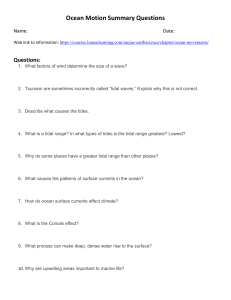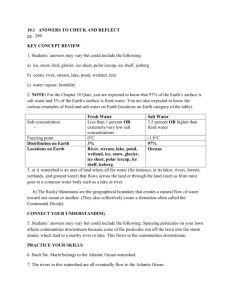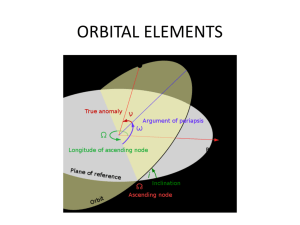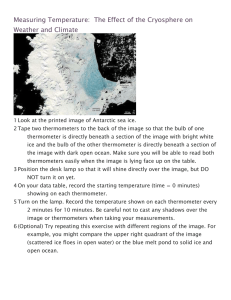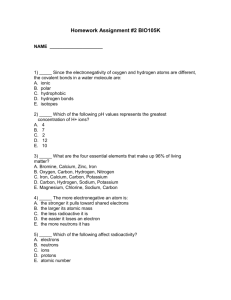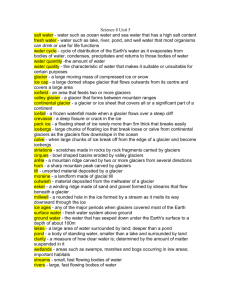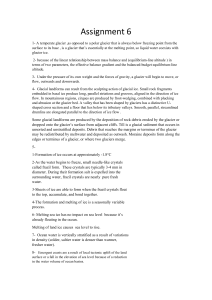CHPT16
advertisement
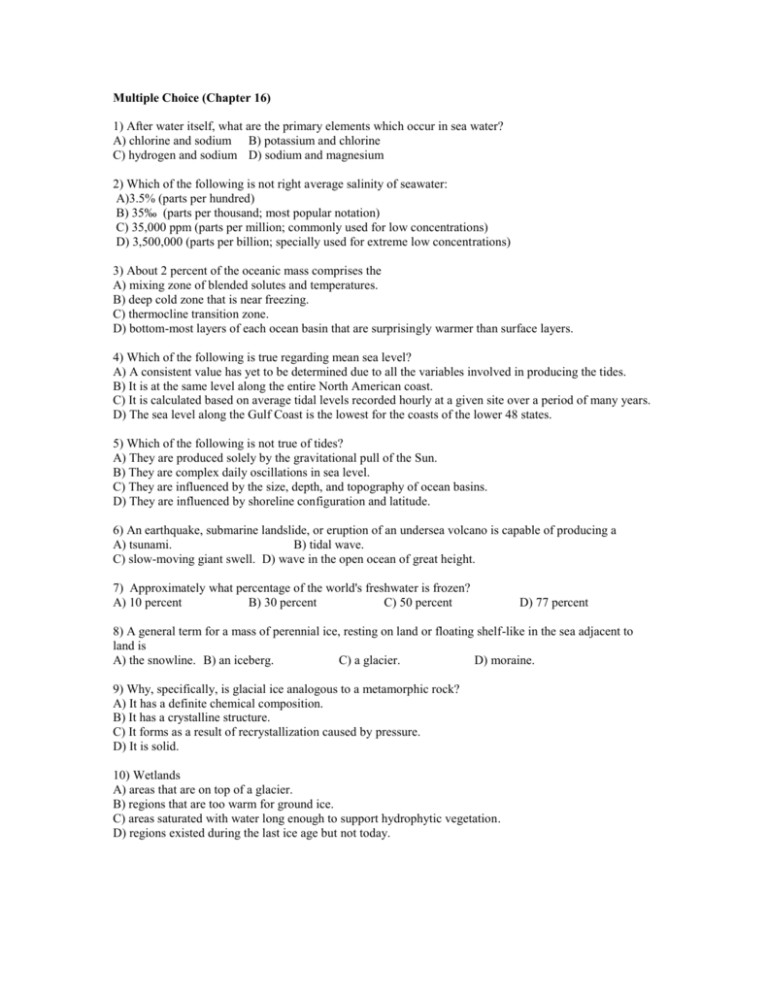
Multiple Choice (Chapter 16) 1) After water itself, what are the primary elements which occur in sea water? A) chlorine and sodium B) potassium and chlorine C) hydrogen and sodium D) sodium and magnesium 2) Which of the following is not right average salinity of seawater: A)3.5% (parts per hundred) B) 35‰ (parts per thousand; most popular notation) C) 35,000 ppm (parts per million; commonly used for low concentrations) D) 3,500,000 (parts per billion; specially used for extreme low concentrations) 3) About 2 percent of the oceanic mass comprises the A) mixing zone of blended solutes and temperatures. B) deep cold zone that is near freezing. C) thermocline transition zone. D) bottom-most layers of each ocean basin that are surprisingly warmer than surface layers. 4) Which of the following is true regarding mean sea level? A) A consistent value has yet to be determined due to all the variables involved in producing the tides. B) It is at the same level along the entire North American coast. C) It is calculated based on average tidal levels recorded hourly at a given site over a period of many years. D) The sea level along the Gulf Coast is the lowest for the coasts of the lower 48 states. 5) Which of the following is not true of tides? A) They are produced solely by the gravitational pull of the Sun. B) They are complex daily oscillations in sea level. C) They are influenced by the size, depth, and topography of ocean basins. D) They are influenced by shoreline configuration and latitude. 6) An earthquake, submarine landslide, or eruption of an undersea volcano is capable of producing a A) tsunami. B) tidal wave. C) slow-moving giant swell. D) wave in the open ocean of great height. 7) Approximately what percentage of the world's freshwater is frozen? A) 10 percent B) 30 percent C) 50 percent D) 77 percent 8) A general term for a mass of perennial ice, resting on land or floating shelf-like in the sea adjacent to land is A) the snowline. B) an iceberg. C) a glacier. D) moraine. 9) Why, specifically, is glacial ice analogous to a metamorphic rock? A) It has a definite chemical composition. B) It has a crystalline structure. C) It forms as a result of recrystallization caused by pressure. D) It is solid. 10) Wetlands A) areas that are on top of a glacier. B) regions that are too warm for ground ice. C) areas saturated with water long enough to support hydrophytic vegetation. D) regions existed during the last ice age but not today. 1. 2. 3. 4. 5. 6. 7. 8. 9. 10. a d a c c a a b c c
